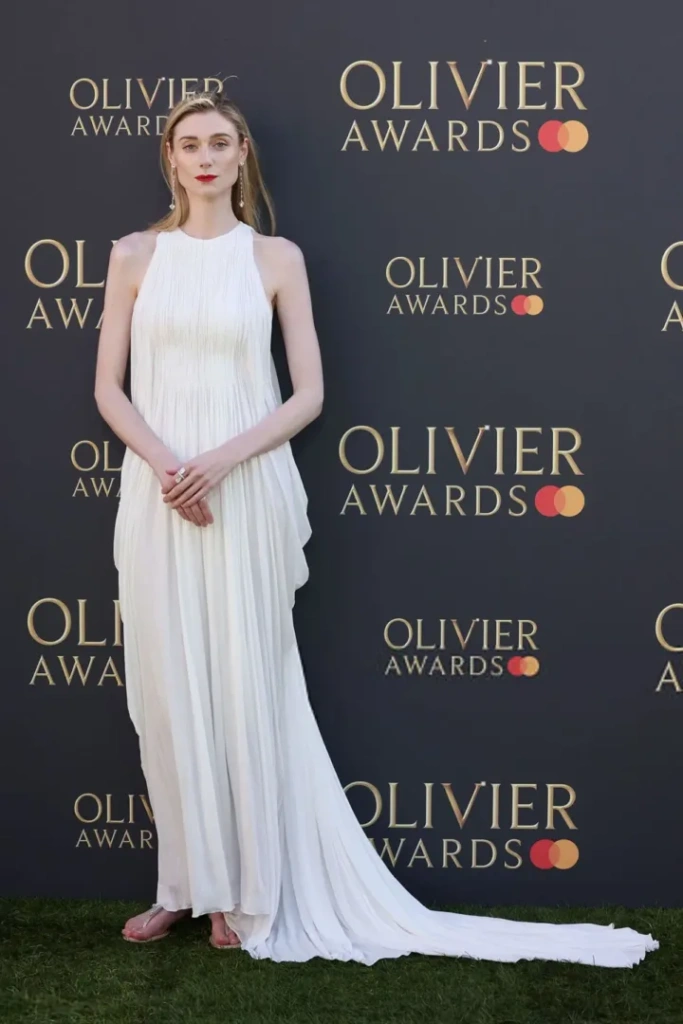The Art of Wearing White at Night: A Masterclass in Elegance and Precision
The resurgence of white in eveningwear—seen in shades of ivory, champagne, and cream—marks a deliberate pivot from the gothic dominance of black on recent red carpets and spring/summer 2025 runways. This shift, embraced by the A-list, redefines nocturnal sophistication with a luminous palette that demands meticulous styling to avoid veering into bridal or sleepwear territory.
Red Carpet Reverence: White as a Statement
At this year’s Olivier Awards, Elizabeth Debicki and Lara Pulver exemplified the spectrum of white’s versatility. Debicki’s draped Grecian-style Dior gown—paired with flat sandals and pearl-drop earrings—embodied ethereal minimalism, while Pulver’s sculptural Tove Studio cape dress offered a modern, architectural edge. Both looks transcended the shade’s youthful associations, proving white’s capacity for timeless maturity.

Across the Atlantic, Gwyneth Paltrow and Jessica Chastain further championed the trend. Paltrow’s Donna Karan strapless column dress epitomized American minimalism, while Chastain’s backless, silver-beaded Gucci gown merged daring cut-outs with Old Hollywood glamour. Meanwhile, Uma Thurman demonstrated white’s adaptability in separates, pairing a pleated Prada maxi skirt with a floral-tie blouse—a masterclass in tonal dressing with deliberate texture play.

Navigating the Nuances: Expert Styling Insights
White’s intimidation factor—particularly for fair complexions—can be mitigated with strategic tonal selection. Rhea Francois, red-carpet stylist to Sabrina Elba and Maya Jama, advises: “Opt for creamier off-whites if stark white washes you out. Warmer undertones flatter most skin depths, while darker complexions can carry brighter whites effortlessly.”
The bridal pitfall looms large, especially with lace, ruffles, or excessive beading. Francois recommends “architectural silhouettes—sharp tailoring, corseting, or avant-garde cut-outs—to modernize the look.” For slip dresses (a nod to the ’90s revival), she suggests “a tonal blazer to elevate the ensemble, ensuring cohesion in hue. Statement accessories—a sculptural earring, a structured bag—anchor the look in intentionality.”
Fabrication & Fit: The Non-Negotiables
- Material Matters: Avoid synthetics—opt for luxe fabrics like silk, faille, or double-faced wool. White’s unforgiving nature demands opacity and structure.
- Silhouette Precision: Overly loose cuts risk nightgown associations. Francois emphasizes “subtle boning or a tuxedo-inspired shape to maintain polish.”
- Accessory Discipline: Understated elegance reigns. A metallic clutch, diamond studs, or a single bold cuff ensure sophistication without overwhelming the palette.
Practical Considerations for Impeccable Execution
- Stain Preparedness: “Shout Wipe and Go is a stylist’s secret—always on hand for emergencies,” notes Francois.
- Suede Sabotage: Avoid color transfer from suede outerwear—opt for leather or wool blends.
- Thermal Awareness: White reflects heat but reveals sweat stains. Choose breathable, lined fabrics for climate control.
- Maintenance Rituals: “Regular dry cleaning preserves brightness,” advises Francois.

Occasion-Appropriate Caution
White’s grandeur suits galas, dinners, and cultural soirées—not muddy fields or toddler-filled gatherings. And as for weddings? Unless you’re the bride, this is one trend to sidestep.
Final Verdict: White at night is a study in contrasts—soft yet sharp, pure yet powerful. Master its nuances, and it becomes the ultimate sartorial flex.
